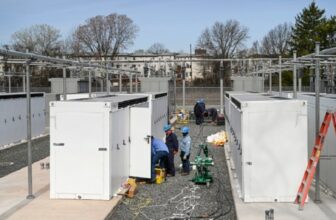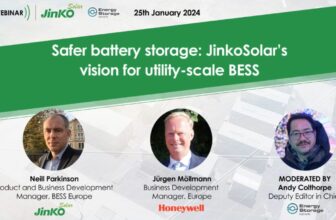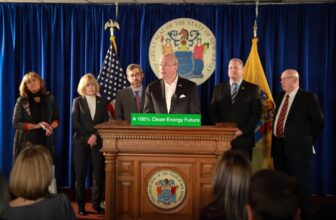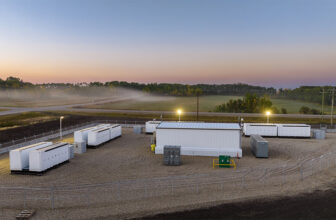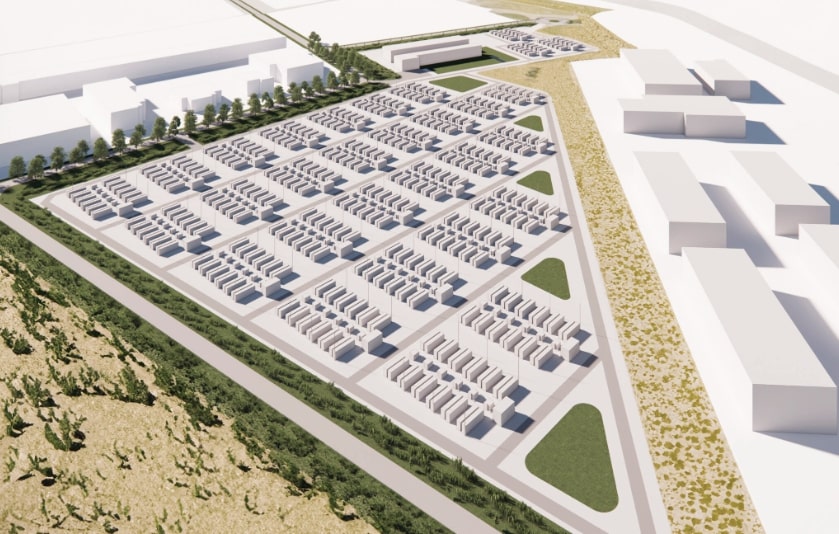
[ad_1]
It goes alongside news reported by Energy-Storage.news since 1 January from developers and investors in California, the UK, Belgium and from the local government of a Dutch municipality that have similarly made progress on battery energy storage system (BESS) projects of a gigawatt-hour capacity or more.
Did you read Cameron Murray’s excellent ‘Biggest projects, financing and offtake deals in the energy storage sector in 2023’ among our Year in Review blogs? The lead entry in that list, for biggest lithium BESS connected to the grid last year, was Vistra’s 350MW/1,400MWh expansion to Moss Landing Energy Storage Facility.
It was already the world’s biggest project of its kind prior to that third phase of buildout, and now stands at 750MW/3,000MWh across three separate systems at one site in California’s Monterey County. In 2022, the biggest project completed, also in California, was Canadian Solar and Axium Infrastructure’s Crimson Energy Storage asset – also 350MW/1,400MWh.
So, that sort of puts into context some of these items we’ve already covered in less than three weeks since the year began:
- 3 January: the municipal board of Noordoostpolder in the Netherlands threw its backing behind a proposed 250MW/1,000MWh project, submitting a draft zoning plan for an asset which would help integrate the output of a nearby wind power plant as well as provide grid services to transmission operator TenneT.
- On 4 January, developer Innova won local planning permission in North-West England for a 940MW/1,880MWh project, our colleagues over at UK PV site Solar Power Portal, wrote.
- Then, 12 January, we reported that California-based power producer Calpine Corporation said it had closed a billion-dollar financing for a 680MW project in the state. While the megawatt-hour capacity wasn’t given in a release, the standard for 4-hour duration projects in the CAISO grid mean it’s highly likely we’ll be looking at a capacity of around 2,720MWh.
- Back in the UK just a few days later (published 15 January), developer Exagen was granted planning approval for Normanton Energy Reserve, a 500MW/1,000MWh project in Leicestershire in the Midlands, the central region of England.
- And this week we reported that Giga Storage, headquartered in the Netherlands, is developing a 600MW/2,400MWh BESS in neighbouring Belgium which it hopes to begin constructing during this year.
So far, so good, you could say. Although energy systems modelling will invariably tell us it is still nowhere near enough, battery storage projects at gigawatt-hour scale are coming. And yes, the above are a selection of announcements of projects at various stages in their development and may not begin construction for a few years yet, some may well not get built at all.
But, the fact that they’re already coming thick and fast – especially as 2023 started a little slow, perhaps as US developers and investors grappled with the implications of the Inflation Reduction Act – makes this a hugely exciting start to 2024.
BloombergNEF’s Tier-1 BESS provider list
Downstream, projects are getting bigger, and upstream, well, you can probably guess that there’s a lot of activity happening with manufacturers too.
Recent analysis by UK-based consultancy CRU found that lithium-ion battery manufacturers globally have now reached a terawatt-hour of annual production capacity. While that’s obviously going to be shared out between various end markets, primarily electric cars, that’s still a lot of batteries.
And one thing that’s striking about our mini-list of big project announcements above, are the two outlier markets of the Netherlands and Belgium.
It’s almost routine to see hundreds of megawatt-hours per site in the UK and California but in continental Europe… well, to give you some context, Giga Storage completed the Netherland’s largest BESS at the time of its completion in 2022, at 25MW/48MWh. That’s since been superceded by a 68MWh project commissioned last year, but it looks increasingly likely that both of those will be dwarfed by their portfolio pals several times over within a couple of years.
So within that context, we’re talking about a lot of equipment purchases. For our friends and colleagues in the solar industry – the reputable ones that are likely to stay in the business anyway – procurement has long been synonymous with bankability.
Bankability, in turn, has long been if not synonymous with, then very closely related to, the rankings of key solar PV equipment providers such as modules and inverters into tiers, with BloombergNEF’s Tier-1 listings among the best known and referenced.
So, in a period of some really big news about some really big projects, the BloombergNEF’s fresh release of a Tier-1 energy storage supplier list may be less tangible than a 1GWh BESS, but it could turn out to be an important moment, if it becomes as accepted and used to guide financial decisions as its solar PV equivalents.
You can read our coverage of BloombergNEF’s new list here, which reveals a small number of the companies included, courtesy of BloombergNEF energy storage research head Yayoi Sekine. Sekine also commented on one of the firm’s key takeaways from putting it together, namely the “significant uptick of lesser known suppliers, especially from China”.
You can also read in that article about the methodology used. It’s important also to note that what’s covered are full, system-level grid-scale battery storage suppliers rather than just cells or other components.
Via business networking site LinkedIn, Marek Kubik, formerly with Fluence and now a director at NEOM, said the criteria for inclusion seemed “really dubious” with the bar set quite low. Kubik wrote that the explanation of methodology implied any technology providers or integrators that had sold “at least 6 x 1MW of systems over the last two years to non-related parties,” without a requirement for an “operational track record” would be classed as Tier-1, “as long as it isn’t bankrupt”.
Florian Mayr, partner at cleantech financial advisory Apricum, agreed that the criteria given represented “a pretty low bar” and Zaphiro Technologies product manager Andrea Polini also agreed, adding that BloombergNEF should “do financial assessment of the companies in order to classify this Tier-1”.
Stronger words were offered directly to Energy-Storage.news Premium from one industry source, who agreed to speak on condition of anonymity.
The source said the list “didn’t make sense” to them, because while BloombergNEF wrote that the tier system “is designed to create a transparent differentiation between the hundreds of manufacturers on the market,” the research firm disclaim that somewhat by adding a strong recommendation “battery purchasers and banks do not use this list as a measure of quality”.
“If it was my money, the ONLY thing I would want to know about is quality. And, you can’t understand quality by assessing a load of ‘excel sheets’ coming in from manufacturers. The only thing you can assess with this process is how good their marketing and bid/deal teams are!”
The source added that they were a “strong believer that you can’t outsource quality management and supplier selection to third parties”.
The source did say however that, like the solar PV Tier-1 lists, the BESS Tier-1 list might be “a good measure of balance sheet strength,” which they said is in itself a “valuable exercise”.
Ultimately, for some, that’s the point of bankability. It isn’t necessarily about quality at all, it’s as much about whether your equipment provider will be around to fix things if they break.
In other words: will a bank lend you money to buy that equipment, or will it think it’s too risky?
Perhaps it shouldn’t be that, but it is. The solar industry is different, the source said, because it has become commoditised and is much further along its industry learning curve.
So, as with the industry around it, it’s early days for the Tier-1 differentiation of BESS providers. It’ll be very interesting to see how the thinking around it evolves.
On a closely related note, coming up next week we have an Energy-Storage.news webinar with Clean Energy Associates (CEA), the testing and assurance group. Off the back of more than 30GWh of factory inspections, CEA experts will be discussing the many success factors that go into the manufacture of batteries and systems for stationary energy storage. It’s free to attend and we hope to see you there, 31 January, 11am EST (5pm CET).
Happy Friday!
[ad_2]



